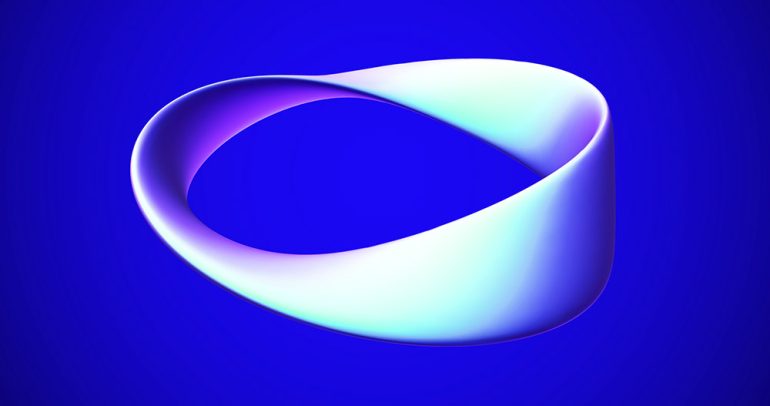Twisted light: Physicists have distorted a beam of light into a Möbius strip—a twisted band along the edges that merge into each other. This was made possible by a kind of “whisper gallery” for the light. It consists of a ring-shaped waveguide with an odd number of tiny nubs moving inside and slowing down the light waves. This new way of manipulating light could be useful for photonic chips, quantum technology and other optical technologies.
either data transmissionManipulation of light forms the basis of many modern techniques: as a drive for nanomotors or as the basis for quantum technologies and photonic chips. Mostly photonic crystals or metamaterials are used, polarization and stage Light waves are modified through physical interaction. slow too to stop And to save Light can pass through such material.
whispering gallery as a model
A new form of light manipulation has now been achieved by a team led by Mingkang Wang from the US National Institute of Standards and Technology (NIST). They have constructed a waveguide that can bend a beam of light into a Möbius strip – a ribbon with merging sides. The phases of light are shifted and rotated in such a way that the beam has to complete two complete orbits before it returns to its initial configuration.
The theory of acoustic whisper galleries provided the inspiration for new types of waveguides. In such vaults or round buildings, sound waves are refracted and reflected along the walls in such a way that they reach the other end almost without any damage – you can even hear a light whisper from the other side of the room. A similar effect can also be produced with light if it is directed along specially curved surfaces.
Until now, only waves with integer angular momentum could be produced in such optical whisper galleries. As a result, the light wave has returned to its initial state by circling a ring-shaped whispering gallery.
wave phase manipulation
But the waveguide developed by Wang and his team can do more: for the first time, it makes it possible to bring light into more exotic shapes in which the phases coincide again after only two or more rounds. In physical terms, the optical whispering gallery can also impose fractional values of angular momentum on light. “In this way, we generate light in the form of a Möbius strip for the first time,” says co-author Zhiyuan Lu of NIST.

This manipulation is made possible by the special structure of photonic crystals made from the semiconductor material silicon nitride. It forms a ring with a diameter of 25 micrometers, inside which are carved small stones. The nanostructure affects the interaction of light with the material and slows the light beam tenfold. Unlike some other approaches, the intensity of the light hardly decreases, as physicists report.
Odd number of nub sheds light in alien twist
The highlight, however, is that if the ring-shaped waveguide has an odd number of nubs, even fractional numbers of optical angular momentum can be generated. The state and direction of light changes in such a way that the wave has not yet returned to its original state after one orbit. “In this whispering gallery mode, the light has to complete two orbits before the stage matches again,” explain Wang and his team.
In the experiment, the physicists used a ring with 333 µm and a waveguide integrated into the photonic chip to feed in the light. Some of the photons escaping the ring formed a pattern of light and dark spots along the ring that revealed the phase and direction of the light wave. As a result, the light in the ring had a total angular momentum of N/2, Wang and colleagues report.
new application possibilities
According to the physicists, this light manipulation quantum technology opens up new possibilities for photonic applications in both optomechanics and non-linear photonics. Furthermore, unlike some previous approaches to creating exotic light modes, their waveguides integrate well with general photonic chips, simplifying practical application. (Physical Review Letters, 2022; doi: 10.1103/PhysRevLet.129.186101,
Source: American Physical Society (APS)

Internet fan. Alcohol expert. Beer ninja. Organizer. Certified tv specialist. Explorer. Social media nerd.





